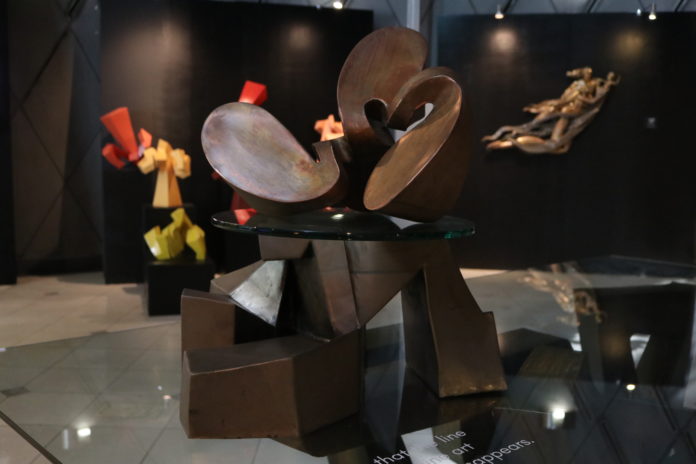EDUARDO Castrillo, the man behind larger-than-life public sculptures such as the People Power Monument along Epifanio de los Santos Avenue (Edsa) and the Andres Bonifacio tableaux near Manila City Hall, was the subject of a retrospective exhibit, Eduardo Castrillo @ 50: Moving the Legacy Forward, at the Yuchengco Museum, Makati City Oct. 13 to Nov. 24.
The retrospective to mark his 50th year as a professional artist had been planned even before Castrillo, a Fine Arts alumnus from the old College Architecture and Fine Arts, succumbed to cancer only last May 13. He was 73 years old.
Castrillo was known for his monuments that showed his patriotic zeal and religious fervor.
His patriotic monuments include the famous Rajah Soliman sculpture at Plaza Rahah Soliman in Malate, Manila, Spirit of Edsa inside RCBC Plaza, Emillio Aguinaldo monument in Trece Martires, Cavite, the Diwa Ng Batangueño monument in Capitol Hills Park, Batangas City, Sultan Kudarat monument in Cotabato City, and Golden Tribute to the History of Cebu, a 40-feet metal monument in celebration of Cebu’s history.
Luneta parkgoers of course are familiar with light-and-sound tableaux of the last days of Jose Rizal.
Although the sculptures were inspired by august thoughts of patriotism, Castrillo drew inspiration from folksy, homespun things. The half-circle People Power monument on Edsa was inspired by a cockpit arena, disclosed his son and business assistant and studio manager, Nixxio Castrillo, himself a sculptor.
But Castrillo first earned public acclaim for his religious works, starting with his first major commission, “The Virgin” in La Loma, Manila, his first among his many Marian monuments here and abroad, such as Nuestra Señora de Remedios in Malate, Nuestra Señora de Guia in Ermita, not far from UST, Nuestra Señora de Loreto at the Loreto Church in Bustillos.
But perhaps his most famous religious sculpture is the Pieta and Last Supper at Loyola Memorial Park in Paranaque.
But Castrillo did not start out as a public sculptor but as a jewelry designer.
In the Yuchengco exhibit, photographs of his jewelry pieces such as brass earrings, rings, bracelets and necklaces were displayed.
Perhaps the best-known Filipino modernist sculptor, Castrillo earned acclaim early on for his abstract sculptures, photos of which were shown in the exhibit.
“Diatonic Scale,” a seven-piece group of sculptures made of black iron and powdered paint ,showed thick, interweaving lines and shapes standing in an upright position.
“Light Prisms” was a plexiglass installation, with a light fixture to produce artificial multicolored lights.
According to Nixxio, Castrillo’s early days as an artist started through an exploration of his personal space and environment. Castrillo was influenced by his grandfather who was a craftsman and jeweller, Nixxio added.
“The reason why he made artworks that are really big is because he wanted those who see his works to think big and give them a sense of pride and nationalism,” Nixxio told the Varsitarian.
“He wanted to make an impact and prove that Filipinos are talented.”
“He [taught me that there are no rules in [making art] but you have to stand by what you create,” said Nixxio, himself a sculptor. “Awareness to the world is already an inspiration.”
For Jeannie Javelosa, the exhibit’s curator, Castrillo was an avant-garde artist whose public art works constitute a solid legacy to the nation.
The exhibit was organized by the Castrillo Legacy Art Studio in partnership with Samsung Electronics Company Philippines’ Samsung Culture Connect program, which promotes culture and heritage through technology.














